Ever think about which log splitters help you cut wood easier? People talk about using electric and manual models. Some people like electric log splitters because they are quiet and clean. Others like the strong power of a Landworks 20-Ton Log Splitter - 7HP 209CC Gas Engi. Here is a quick guide to the main benefits and problems people talk about:
Log Splitter Type |
Benefits |
Challenges |
|---|---|---|
Kinetic |
Costs more, best for big jobs |
|
Hydraulic |
Works steady, reliable, not expensive |
Slow for lots of wood |
Electric |
Quiet, easy to move, simple to care for |
Not as strong, hard to use because of height |
Manual |
Easy to use, cheap |
Hard work, not good for tough logs |
You can also find good prices on used log splitters. Many people say they save money, get good results, and like having many choices of log splitters.
Key Takeaways
Electric log splitters do not make much noise. They are easy to move around. They work well for small, soft logs. These logs should be up to 10 inches wide.
Gas-powered splitters are very strong. They can split big, hard logs quickly. They need more care and fuel to run.
Manual splitters are easy to use and cheap. They are good for small jobs. You need to use more strength with them.
Always follow safety rules. Wear protective gear. Keep your work area clean. Use both hands to control the splitter.
Clean your splitter often. Oil it and check the fluids. This keeps your splitter safe and working well.
Electric log splitter user reviews
Ease of use
You may ask if electric log splitters are easy to use. Many people say these machines make cutting wood much easier. You only need to plug it in and press a button. There is no cord to pull or gas smell to worry about. People like that electric splitters are quiet and do not make a mess. You can use them in your garage or backyard without making too much noise.
Most electric splitters have wheels, so you can move them around. Some let you change from flat to upright, which helps your back. Stands and two-speed choices make the job easier. Users say electric splitters are lighter than gas ones, but you must keep them near a plug. If you want to split wood inside, electric splitters work well.
Here’s what users say about how easy they are:
You can split wood with one hand.
Electric splitters are quieter than gas or manual ones.
You do not need to put many parts together.
You can use them inside or outside.
Stands lift the splitter to a better height.
Performance for small logs
If you need to split logs up to 10 inches, electric splitters work well. Many people say a 5-ton electric splitter can split logs up to 10 inches, sometimes even bigger. These machines work best with softer wood. If you try to split very hard wood, like hickory, the splitter may slow down or have trouble.
People often talk about how safe and easy electric splitters are. You can split wood quietly and safely, even in small spaces. If you use a good extension cord, the splitter works better. Some people say the splitter gets hot after a long time, so it is good to take breaks. Always use the splitter on a flat surface for best results.
Here is a table with the main pros and cons from users:
Advantages (Pros) |
Disadvantages (Cons) |
|---|---|
Fast cycle times help you work faster |
Costs more than some gas or basic models |
One hand is enough to use it |
Not strong enough for very hard wood in some models |
Light and has wheels, so it is easy to move |
Can get hot if used for a long time |
Big and heavy models are harder to move |
|
Needs less care than gas splitters |
Needs a flat place and can be hard to put together |
Has safety features like two-hand controls and auto-return |
Sometimes logs break apart in a surprising way |
Works like a gas splitter but does not need fuel |
Some models need a stand to be at a good height |
Easy to set up and good for beginners |
Some models only split small logs |
Cheap choices for light jobs |
Can get too hot if you do not take breaks |
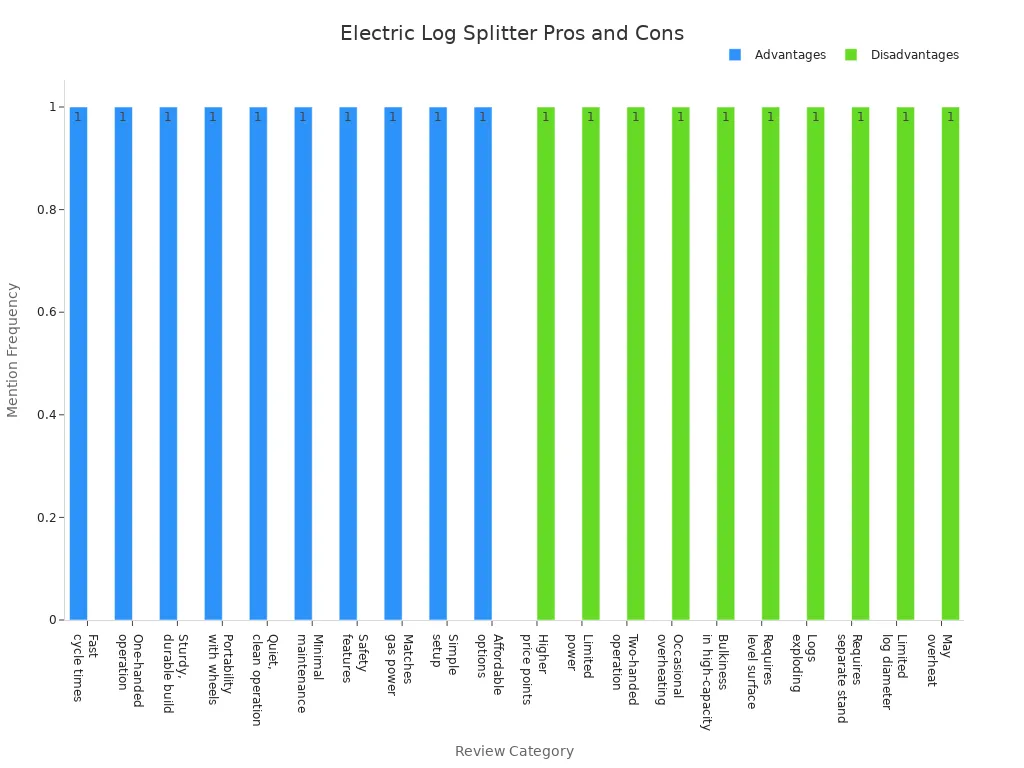
If you want a log splitter that is easy to use and works well for small logs, electric models are a good choice. Most people say they like how quiet, easy to move, and simple to set up these splitters are.
Gas-powered log splitter experiences

Power and reliability
If you want real muscle for your wood pile, gas-powered log splitters deliver. Many users share stories about splitting huge, knotty oak logs that would stop other machines. You might see a Landworks 20-Ton Log Splitter in action and feel impressed by its 7HP engine. This machine handles logs up to 16 inches wide and 20 inches long with a smooth, steady force. You get a fast 7.5-second cycle time, so you can split a lot of wood quickly. The sturdy wheels and strong frame help you move it around your yard or even out in the woods.
Professional log splitters like these are built for tough jobs. You can count on them to start up easily and keep working, even when you have a big stack of wood. Some models let you switch between horizontal and vertical modes, which saves your back when you deal with heavy rounds. If you need a professional tool for heavy-duty work, gas-powered splitters stand out for their power and reliability.
Handling tough logs
You might wonder how gas-powered splitters compare to electric ones when you face tough, dense wood. Here’s a quick look:
Feature |
Gas-Powered Log Splitters |
Electric Log Splitters |
|---|---|---|
Splitting Force |
Under 10 tons (except rare models) |
|
Suitable Log Size |
Large, knotty, dense logs up to 26 inches |
Smaller, softer logs up to 12 inches |
Cycle Time |
Fast |
Slower |
Portability |
Wheels, no outlet needed |
Needs outlet, lighter |
Noise and Emissions |
Noisy, fumes |
Quiet, clean |
Maintenance |
More upkeep |
Less upkeep |
Cost |
Higher |
Lower |
You get more splitting force and efficiency with gas models, especially for professional log splitters. They handle big, twisted, or green logs that would jam other machines. Hydraulic splitters give you steady power and control, with cycle times between 12 and 20 seconds. Kinetic splitters work much faster—just 2 to 3 seconds per cycle—but they do best with small, dry logs. For most heavy-duty jobs, you will want a hydraulic gas splitter for its versatility and strength.
When you use a professional log splitter, you need to think about durability. Some users report stress cracks in the frame or oil leaks if the engine is too heavy. Moisture and ethanol gas can cause corrosion if you leave your splitter outside. You should store your splitter indoors and check the engine and hydraulic fluid often. Many people trust engines from top brands, but even then, regular care keeps your machine running strong. If you treat your log splitter well, it will give you years of reliable, efficient service.
Manual and used log splitters
Simplicity and control
You might enjoy the hands-on feel of splitting wood with manual tools. Many people say manual log splitters, like the classic wedge or the Fishers x27, give you more control. You can split just a few logs for a campfire or a small pile for your fireplace. Manual splitters work well for small jobs and do not need gas or electricity. You can use them in your backyard or even take them camping.
Here are some reasons people like manual splitters:
They need very little maintenance.
You get a safer experience than swinging an axe.
Most manual splitters use strong materials, so they last a long time.
They are easy to carry and store.
You can split wood without much noise.
Some models have safety rings to guide the log and protect your hands.
They help you avoid the heavy lifting that comes with big box store log splitters.
Manual log splitters work best for small to medium jobs. If you only split wood a few times a year, you might find these tools perfect. You do not need to worry about cords, fuel, or complicated parts.
Buying used log splitters
You might want to save money by looking at used log splitters. Many people find great deals, but you need to know what to check before you buy. When buying used log splitters, you should always look at the condition and ask about the maintenance history. Check for rust, cracks, or any damage. Test the splitter if you can. Make sure the hydraulic system and engine work well.
Here are some tips for buying used log splitters:
Look for well-known brands with a good reputation.
Ask for records of maintenance and repairs.
Check if the power source and size fit your needs.
See if there is any warranty or after-sales support left.
Test all parts, including the wedge and controls.
Compare prices with big box store log splitters to know if you get a fair deal.
Be ready to walk away if the price or condition is not right.
Tip: Always check for heavy or hard-to-move machines. Some used log splitters can be too big for your needs. Fast cycle machines may not work well on tough wood. Watch out for odd wedge designs that can slow you down.
After you buy, keep up with regular maintenance. Clean your splitter, check for leaks, and store it in a dry place. This helps your used log splitters last longer and work better.
Wood splitter buying guide
Choosing the right log splitter
Picking the best log splitter for your needs can feel tricky. You want a machine that fits your wood pile, your space, and your budget. Many people start by thinking about how much wood they need to split and how often they plan to use the splitter. If you only split a few logs for your fireplace, you might not need a professional machine. If you heat your home with wood or run a small business, you may want something stronger and faster.
Here are some things you should look for when choosing a log splitter:
Splitting force (tons): This tells you how much power the splitter has. If you split big or hard logs, you need more force. Smaller splitters work well for softwood and small logs.
Cycle time: This is how fast the splitter works. Shorter cycle times help you finish the job faster.
Design: Some splitters work in a horizontal position, while others can switch to vertical. Vertical splitters help with heavy logs because you do not have to lift them.
Safety features: Look for two-handed controls, log cradles, and emergency stops. These features keep you safe while you work.
Durability: You want a splitter that lasts for years. Professional models often use strong steel and have better build quality.
Power source: Gas splitters give you more power and work well for big jobs. Electric splitters are quieter and easier to use for small jobs. Manual splitters are simple and do not need fuel or electricity.
Portability: If you need to move your splitter around, look for wheels and a lighter design.
Cost and value: Think about how much you want to spend and what you get for your money. Sometimes, paying a little more gives you a machine that lasts longer and works better.
Tip: If you want a reliable wood-splitting equipment for your home, look for a model with good safety features and easy controls. For professional use, focus on durability and splitting force.
User reviews and recommendations
You can learn a lot from what other people say about their log splitters. Many users share their stories online, talking about what works and what does not. They often mention how much value they get from their machine, how easy it is to use, and how well it holds up over time.
Here is a quick comparison table based on user ratings and features. This table shows what users like and dislike about top-rated models. You can use it to compare features and find the best fit for your needs.
Model Type |
Key Features & Pros |
Cons |
|---|---|---|
Heavy-duty cast-iron |
Holds wood securely, easy to install, lasts a long time |
Cutting edge may dull quickly |
Balanced hatchet |
Lightweight, sharp edge, easy to swing and sharpen |
Takes longer on bigger wood pieces |
Compact splitter |
Easy to mount, includes blade sharpener, wood falls to the side |
Hard to hold wood evenly |
Kindling splitter |
Weighted hammer, durable steel, easy to transport and sharpen |
Struggles with harder wood |
Slim design splitter |
Easy to install, blade sharpens easily, comes with protective cover |
Small cylinder diameter |
When you read user reviews and recommendations, you see some patterns. People who split wood for home use often want a splitter that is easy to move and store. They like electric models for their quiet operation and simple care. If you need a professional splitter for a farm or business, users say you should look for high splitting force, strong hydraulic systems, and a sturdy frame. Many people mention that professional machines from brands like SuperHandy and Landworks offer great value and last for years.
Users also talk about cost analysis. They compare the price of the splitter to how much work it can do and how long it lasts. Many say it is better to spend a little more for a machine that will not break down after one season. They also look for features like adjustable wedges, fast cycle times, and good safety controls.
You should always think about your own needs before you buy. If you only split a few logs, a simple splitter will do the job. If you split wood all winter or run a business, you need a professional machine that can handle tough jobs every day. Look for user reviews and recommendations to see which models work best for people like you.
Note: Many users say that regular care and cleaning help your splitter last longer. Store your machine in a dry place and check for loose parts before each use.
Safety tips
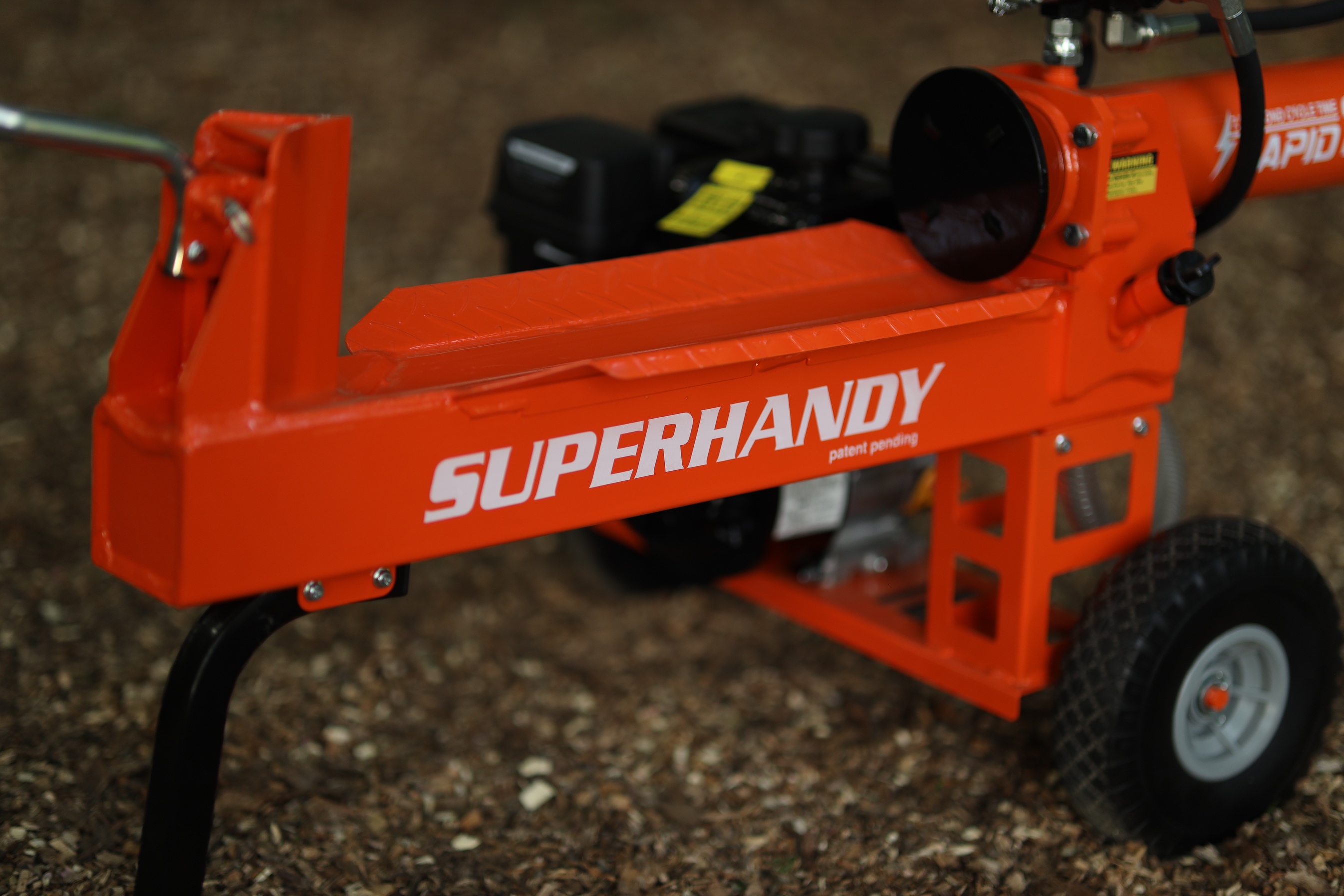
Being safe when splitting wood is very important. You need to protect your hands, fingers, and body. Log splitters may look simple, but accidents can happen fast. Let’s talk about some safety tips. These tips help you avoid injuries and keep your machine working well.
Safe operation
Things can go wrong with a log splitter very quickly. Most accidents happen at home or on a farm, not at work. Hands and fingers get hurt the most, especially thumbs and index fingers. Sometimes, these injuries are so bad that doctors have to remove a finger. Here is a table that shows what experts found about log splitter injuries:
Aspect |
Details |
|---|---|
Common Injury Types |
Hand and upper-limb injuries, including fractures, amputations, and tissue damage |
Most Affected Digits |
Index finger (9 cases), Thumb (5 cases) |
User Demographics |
Mostly male (15 out of 17), median age 68 years |
Injury Context |
All injuries occurred during non-occupational use (home or farm) |
Injury Mechanism |
Contact with wood or machine during operation, often when removing or supporting stuck wood while machine runs |
Injury Severity |
Nearly half of patients required finger amputations |
Statistical Findings |
2.8% of traumatic finger amputations in the US (2012-2016) were due to wood splitters |
Safety Recommendations |
Education, enforcement, improved engineering, safety training, machine design improvements |
Additional Notes |
Injuries require long-term treatment and affect important digits like the thumb |
You can stop most injuries by following easy steps. Here is what experts and users suggest:
Read the manual before using your log splitter. Learn how the controls work.
Wear gloves, goggles, ear protection, steel-toed boots, and tough pants.
Keep your work area clean and flat. Remove anything you could trip over.
Keep kids and pets away from the splitter. Helpers should stay at least 10 feet away.
Do not use the splitter if you are tired, distracted, or using alcohol or medicine.
Only use your log splitter outside in good weather and light.
Turn off the machine before moving or adjusting a log.
Do not wear loose clothes or jewelry that could get caught.
Keep your hands and feet away from cracks in the log and the wedge.
Never leave the splitter running when you are not there.
Tip: Make sure your log splitter is on a flat, steady surface. This helps keep it from tipping over and keeps you safe.
Look for safety features when you buy a log splitter. Two-handed controls, emergency stops, and covers help prevent accidents. Many people say these features make them feel safer.
Maintenance advice
Taking care of your log splitter keeps it safe and working well. Good habits help you avoid problems and injuries. Many people say skipping checks or letting dirt build up causes most issues.
Here is a chart showing the most common maintenance problems:
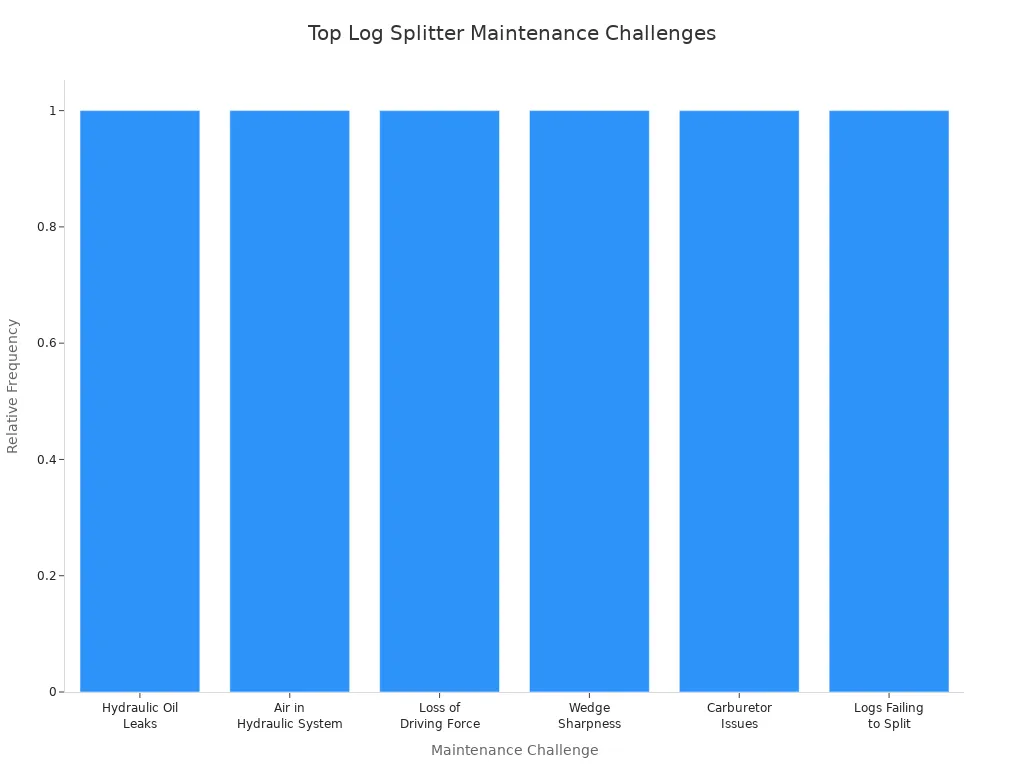
You can stop most problems with a few easy steps:
Clean your log splitter after every use. Remove dirt, wood chips, and sap to stop rust and overheating.
Check and change hydraulic fluid when needed. Dirty or low fluid can cause leaks and weak power.
Look at hoses and clamps for leaks or cracks. Tighten or replace them before using the splitter again.
Sharpen the wedge or blade often. A dull wedge makes the machine work harder and can jam.
Oil moving parts to keep them smooth and stop rust.
Store your splitter in a dry place. Use a tarp or shed to keep out rain.
Follow the maintenance schedule in your manual. Do what the maker says for best results.
Take old hydraulic fluid to a recycling center. Never pour it on the ground.
Note: If your engine surges or loses power, check the carburetor jets. Cleaning or adjusting them can fix most problems.
Here is a table of common maintenance problems and how to fix them:
Maintenance Challenge |
Description and Solution |
|---|---|
Hydraulic Oil Leaks |
Check seals and oil levels. Replace damaged parts and top up fluid. |
Air in Hydraulic System |
Bleed the system and add oil to stop jerking or vibrating. |
Loss of Driving Force |
Check for leaks, air, or cold oil. Replace piston if needed. |
Wedge Sharpness |
Sharpen or replace the wedge to keep splitting easy. |
Carburetor Issues |
Clean or adjust jets to fix surging. |
Logs Failing to Split |
Use proper log positioning and avoid wet or knotty wood if possible. |
If you want your log splitter to last, make cleaning and checking it a habit. Clean and oil it after each use. Store it in a dry place. Check for loose bolts and worn parts before you start. Many people say these small steps save time and money later.
Remember: Good safety and care protect you and your machine. Take a few minutes before and after each use to check your splitter. You will split wood faster, safer, and with less worry.
You want a log splitter that is easy and safe to use. Many people like models such as Kindling Cracker and Kabin Kindle Quick. These splitters are simple and have good safety features:
Model Name |
Why Users Like It |
|---|---|
Kindling Cracker |
Fun to use, strong, does not need much care |
Inertia Wood Splitter |
Safe, easy to carry, works inside and outside |
Craccker Manual Log Splitter |
Splits logs quickly, good for long logs, no upkeep |
Handygo Kindling Splitter |
Simple, tough, safer than using an axe |
Kabin Kindle Quick Splitter |
Splits big logs, steady, easy to move, very reliable |
When you pick a splitter, remember these tips: Pick a splitter that matches your log size and wood type. Choose a power source that works for you. Find features that help you split wood safely and easily.
Be careful, pick what works best for you, and tell us your log splitter story in the comments!
FAQ
How do I know what size log splitter I need?
Think about the biggest logs you want to split. If you cut small logs for a fireplace, a 5-ton electric splitter works well. For big, tough logs, you might need a 20-ton gas model like Landworks.
Can I use a log splitter indoors?
You can use electric log splitters indoors because they do not make fumes. Gas-powered splitters should stay outside. Always keep your work area clean and well-lit for safety.
How often should I maintain my log splitter?
Check your splitter before each use. Clean off dirt and wood chips. Oil moving parts every few uses. Change hydraulic fluid as the manual says. Regular care keeps your machine running strong.
What safety gear should I wear when splitting wood?
Wear gloves, safety glasses, and boots. Long pants help protect your legs. Ear protection is smart if your splitter is loud. Safety gear keeps you safe from flying wood and sharp edges.
Is it worth buying a used log splitter?
You can save money with a used splitter. Check for rust, leaks, and working parts. Ask about past repairs. If you find a good deal on a SuperHandy or Landworks model, you might get years of use.


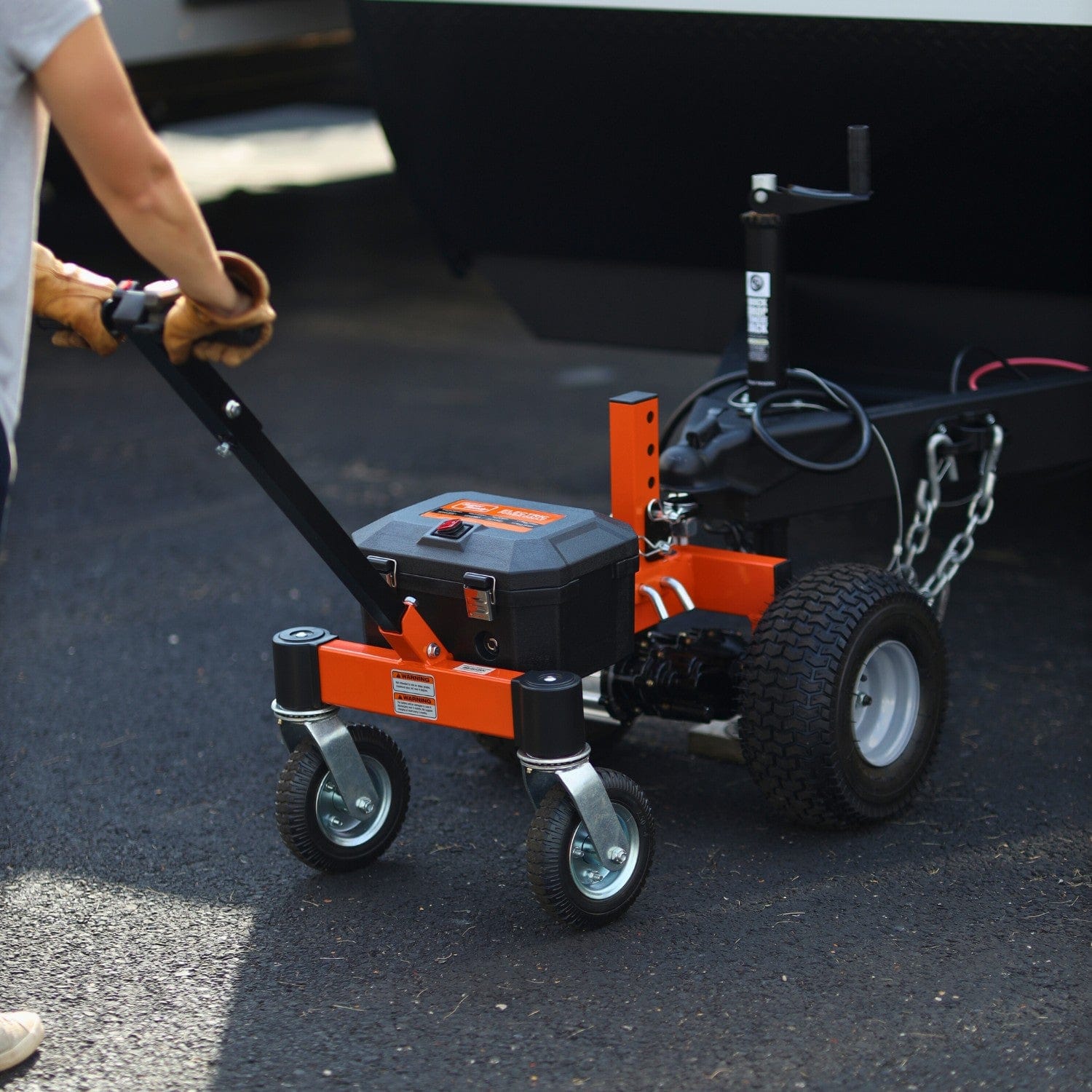
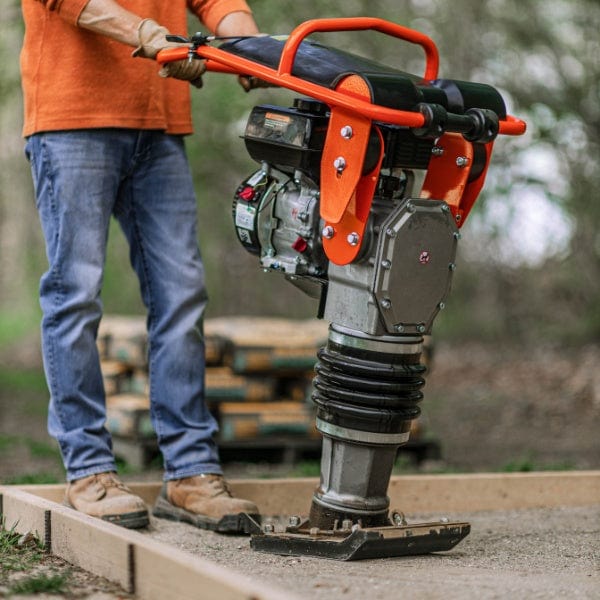
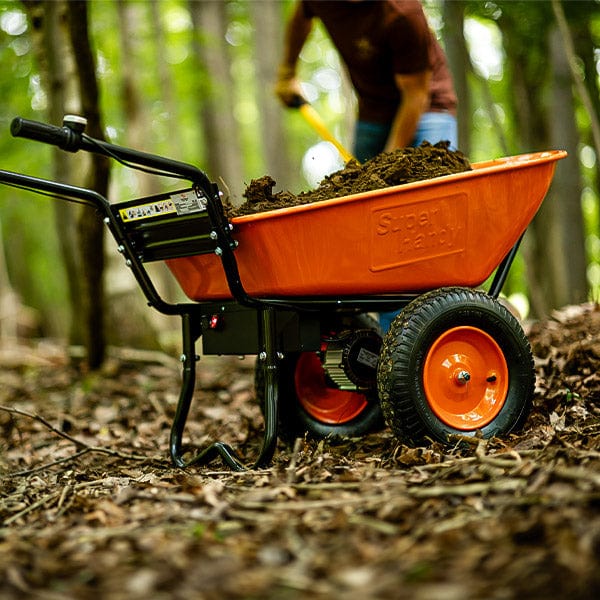


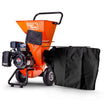
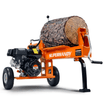

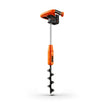
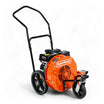
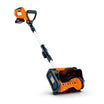
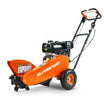
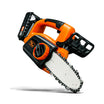

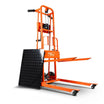
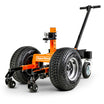
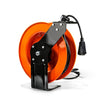
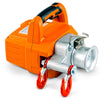


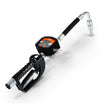
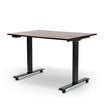
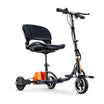
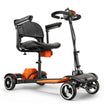
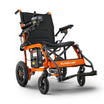


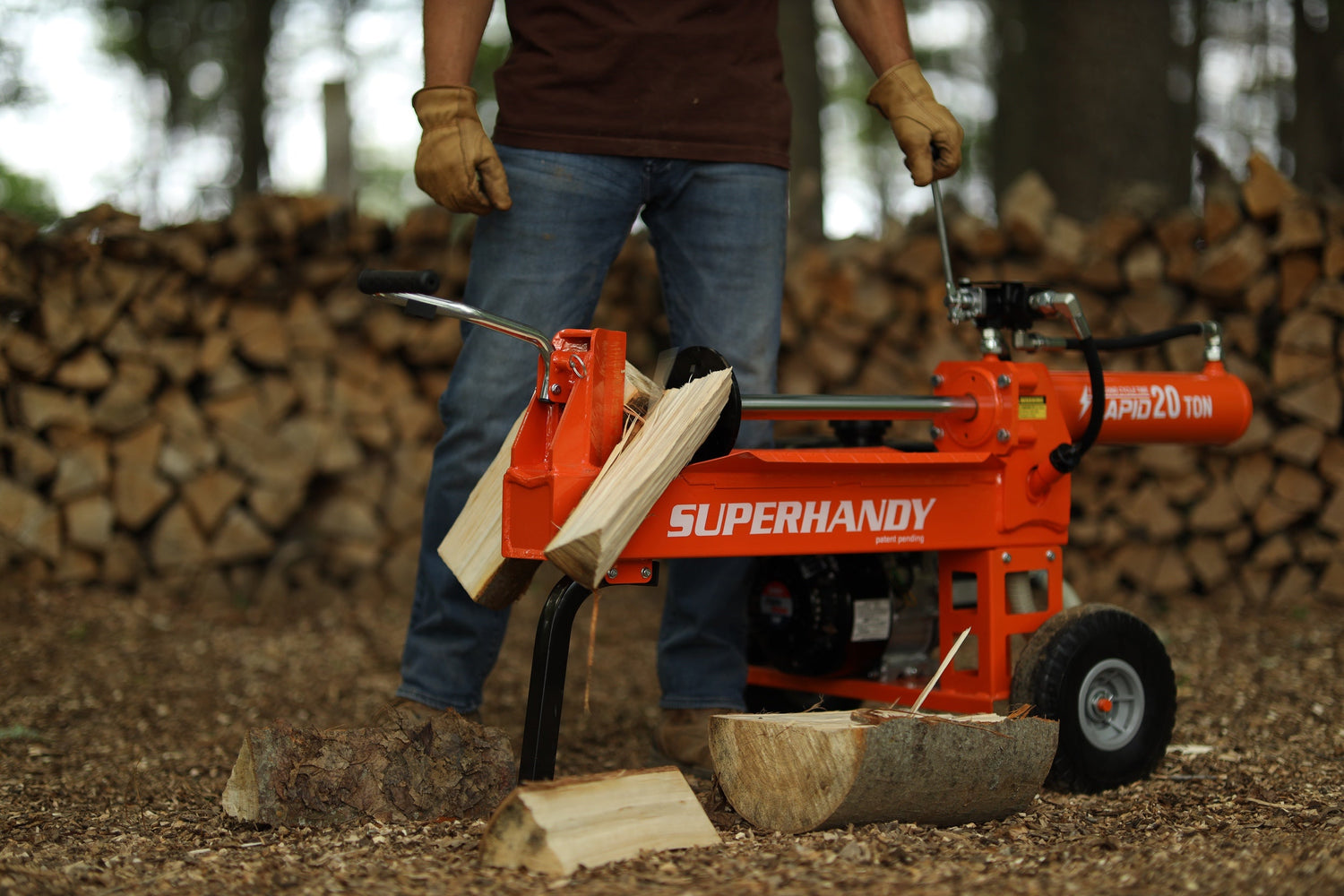
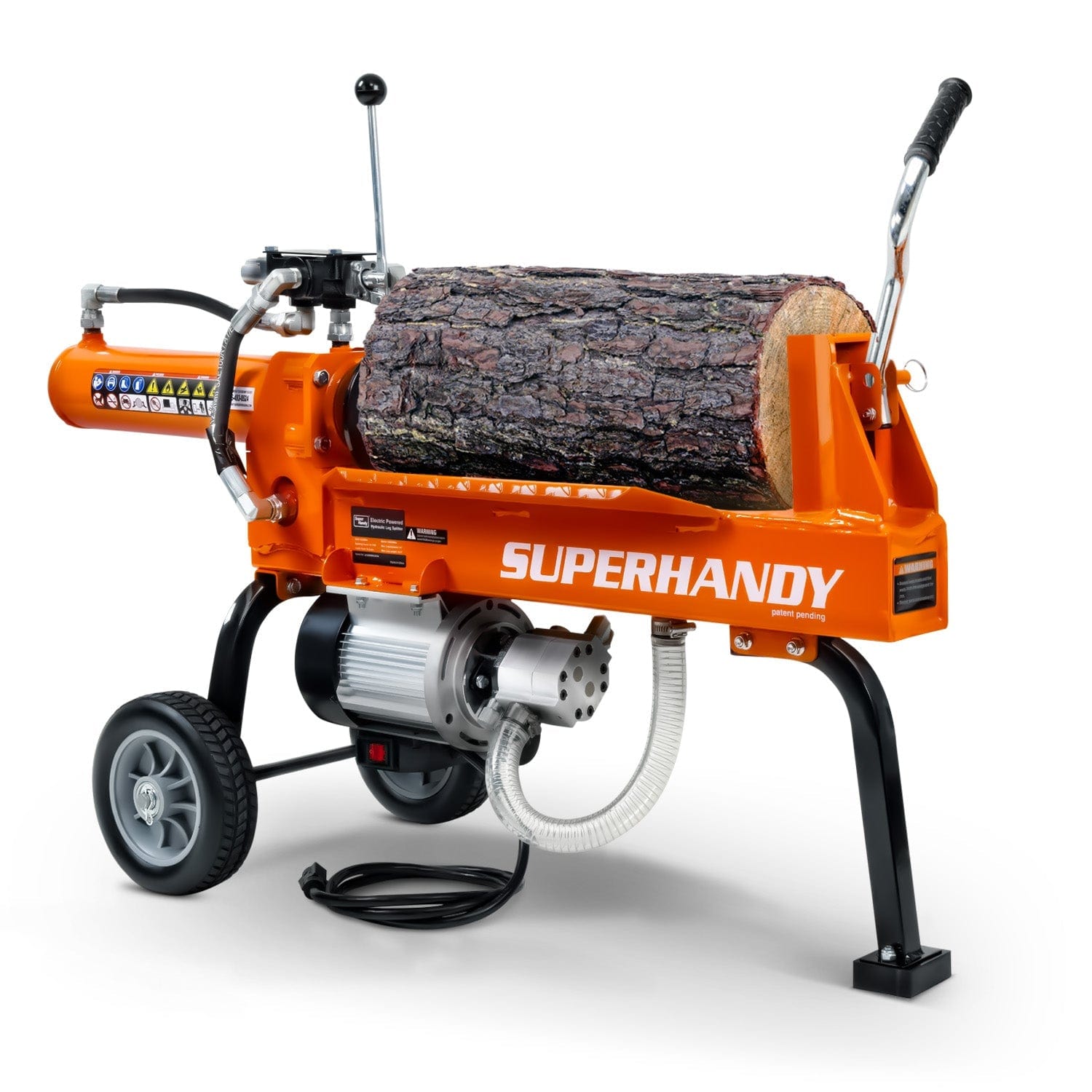
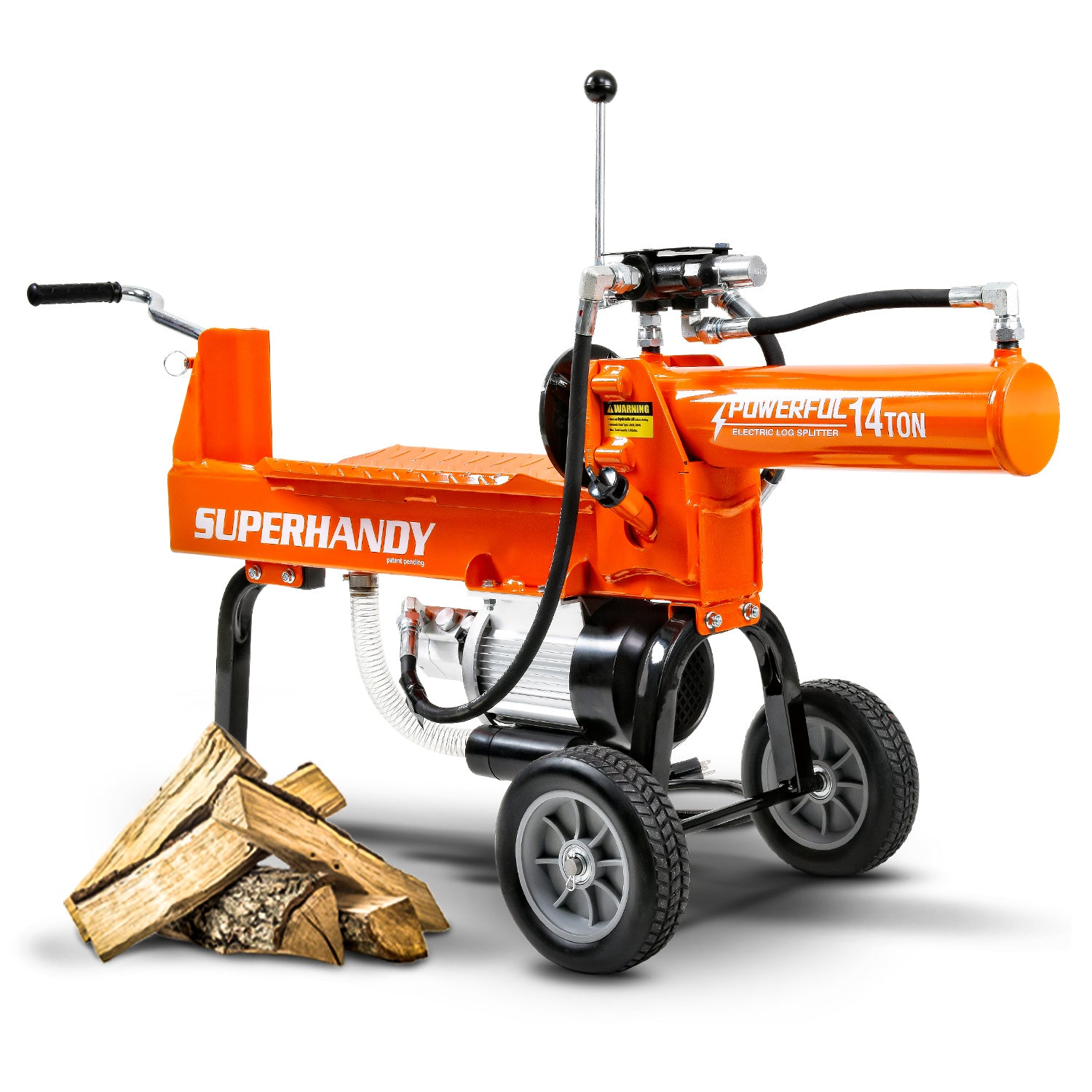
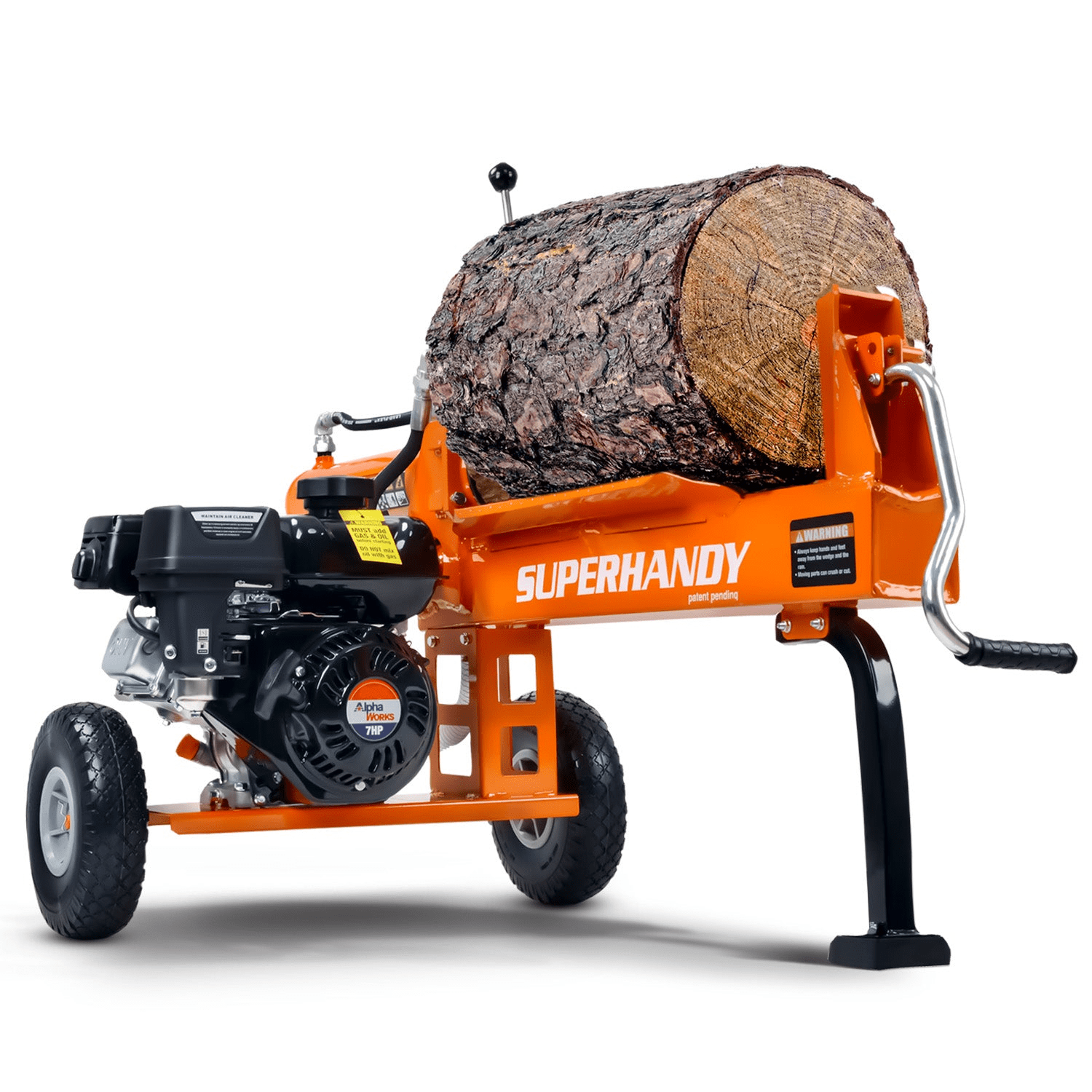
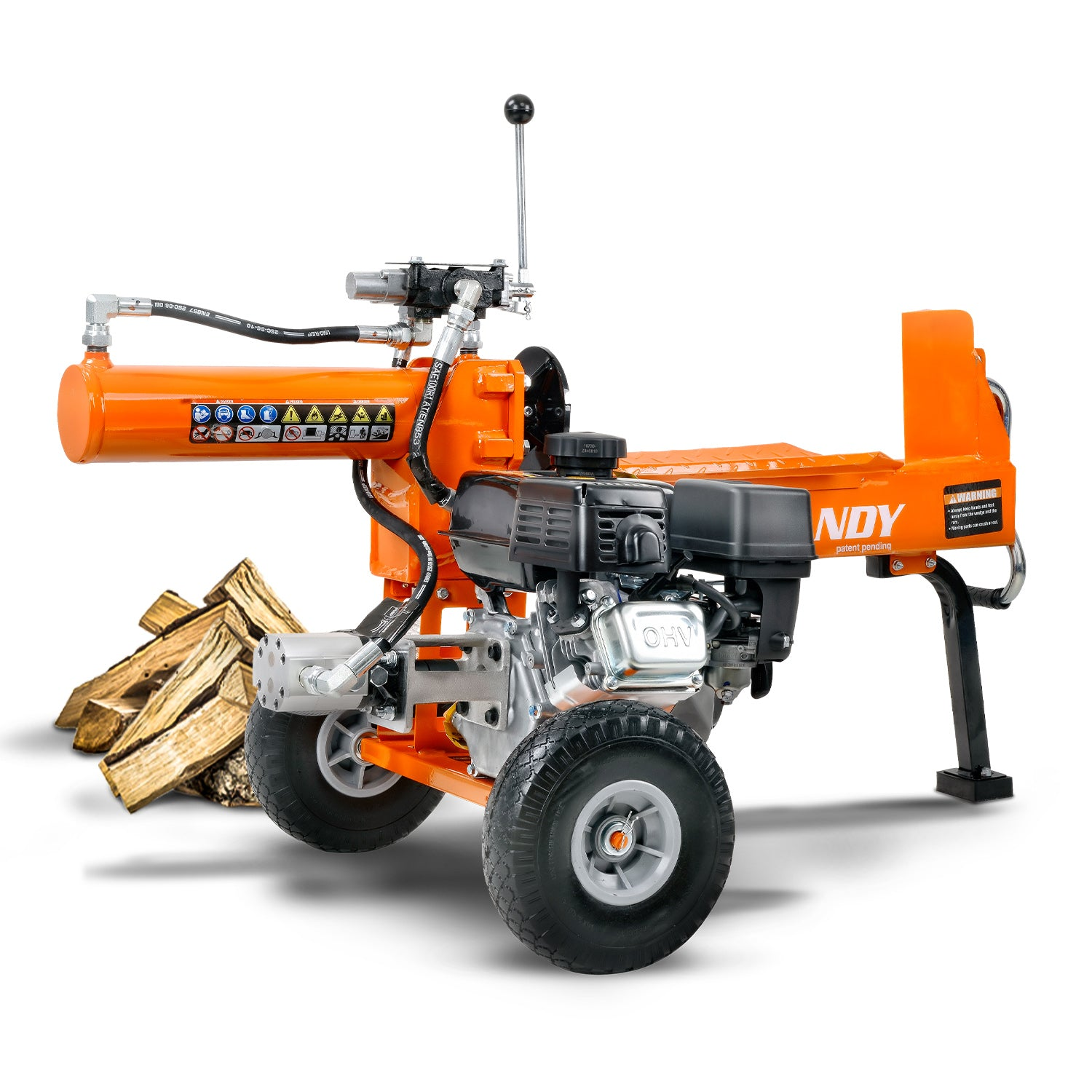
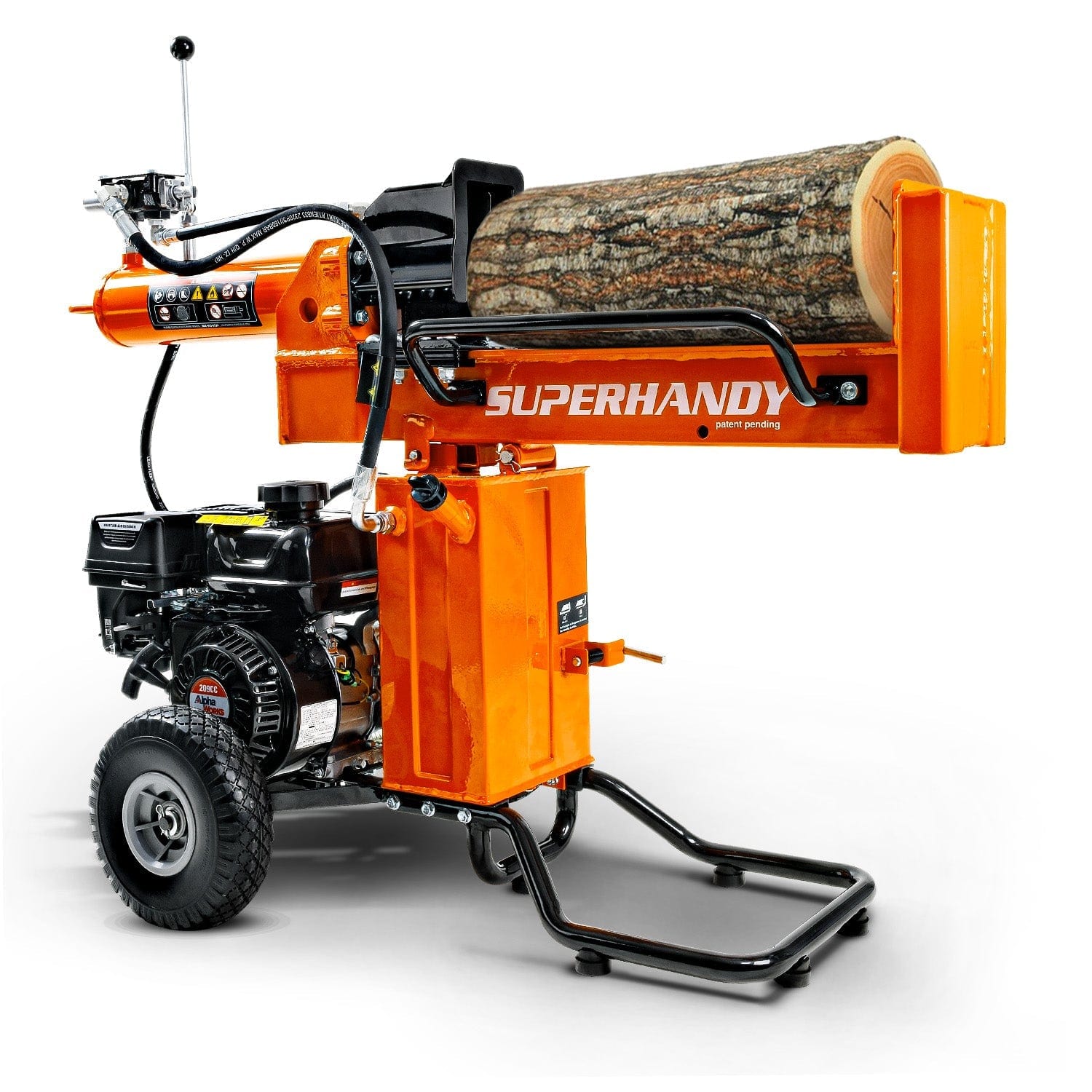
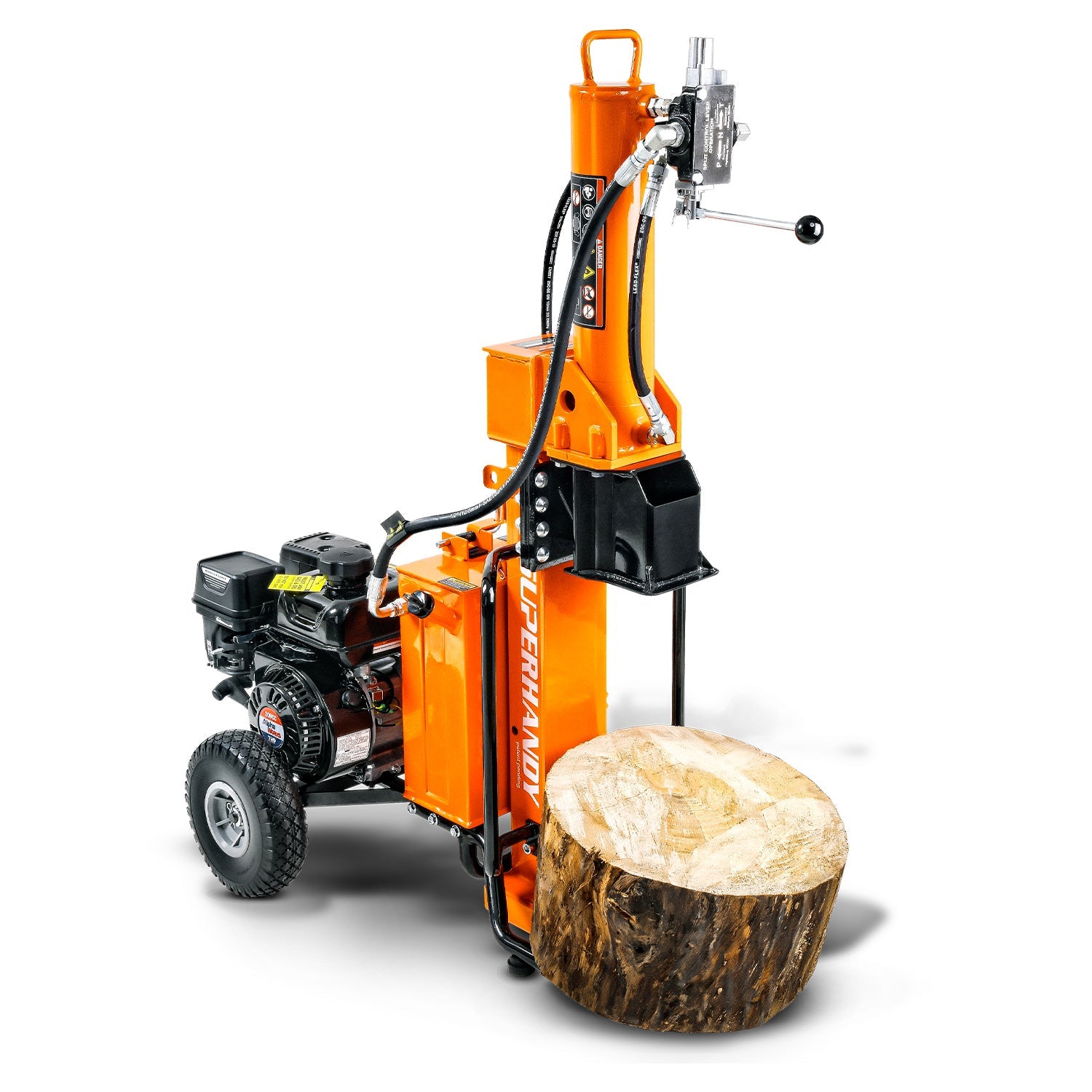
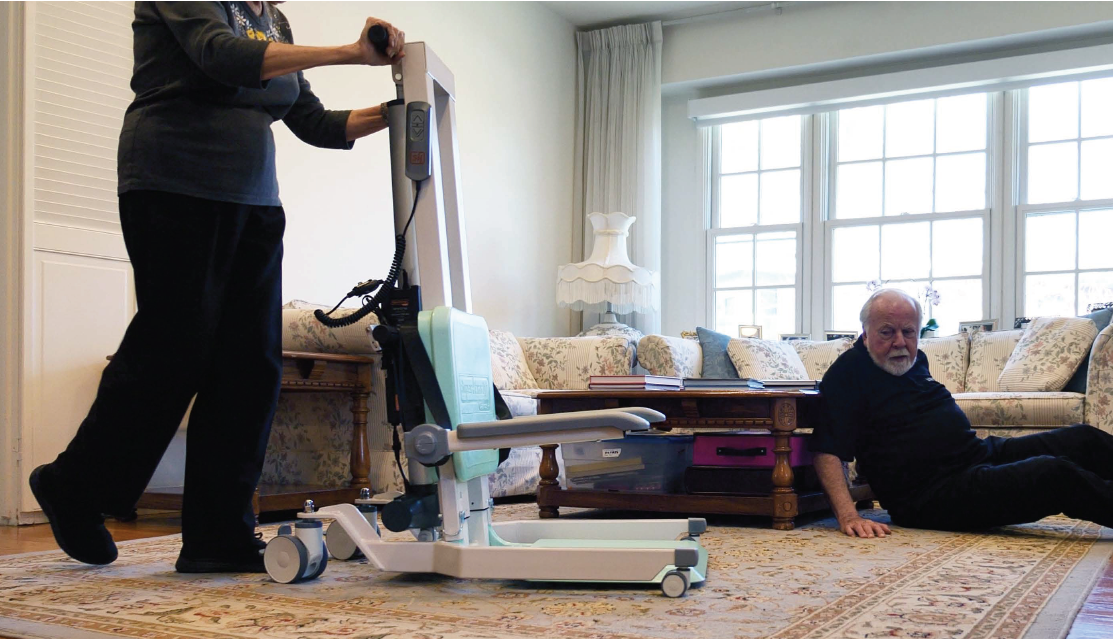
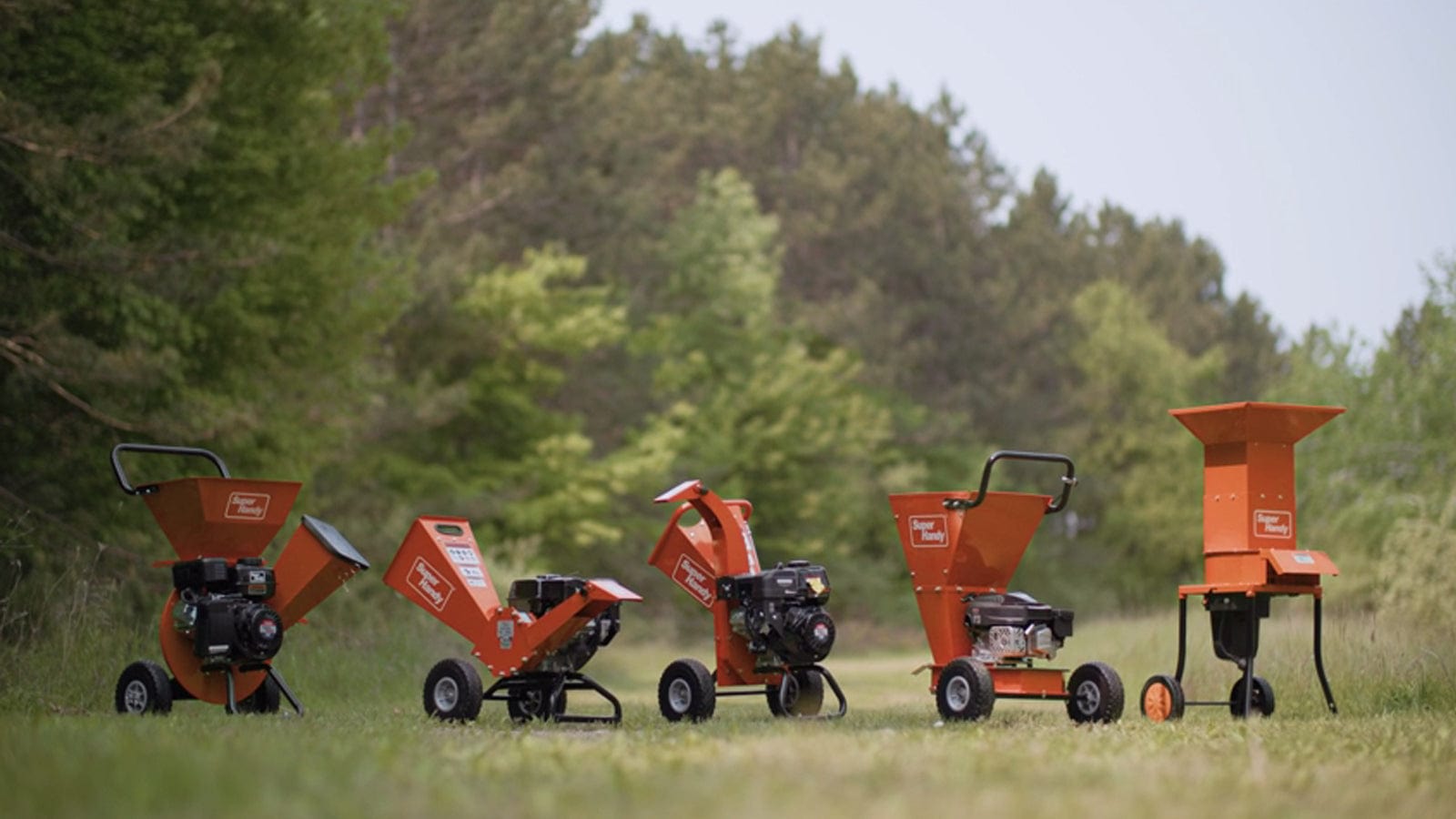
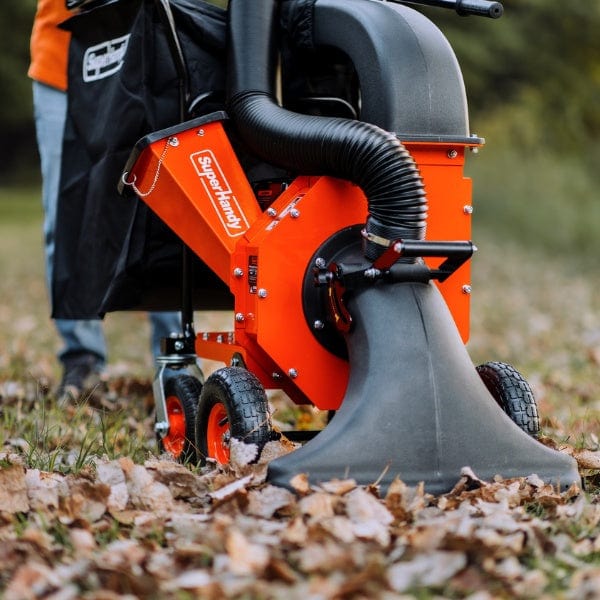
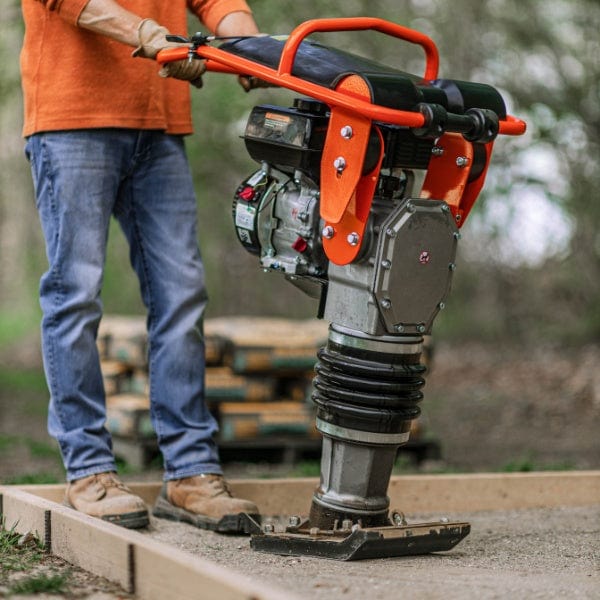

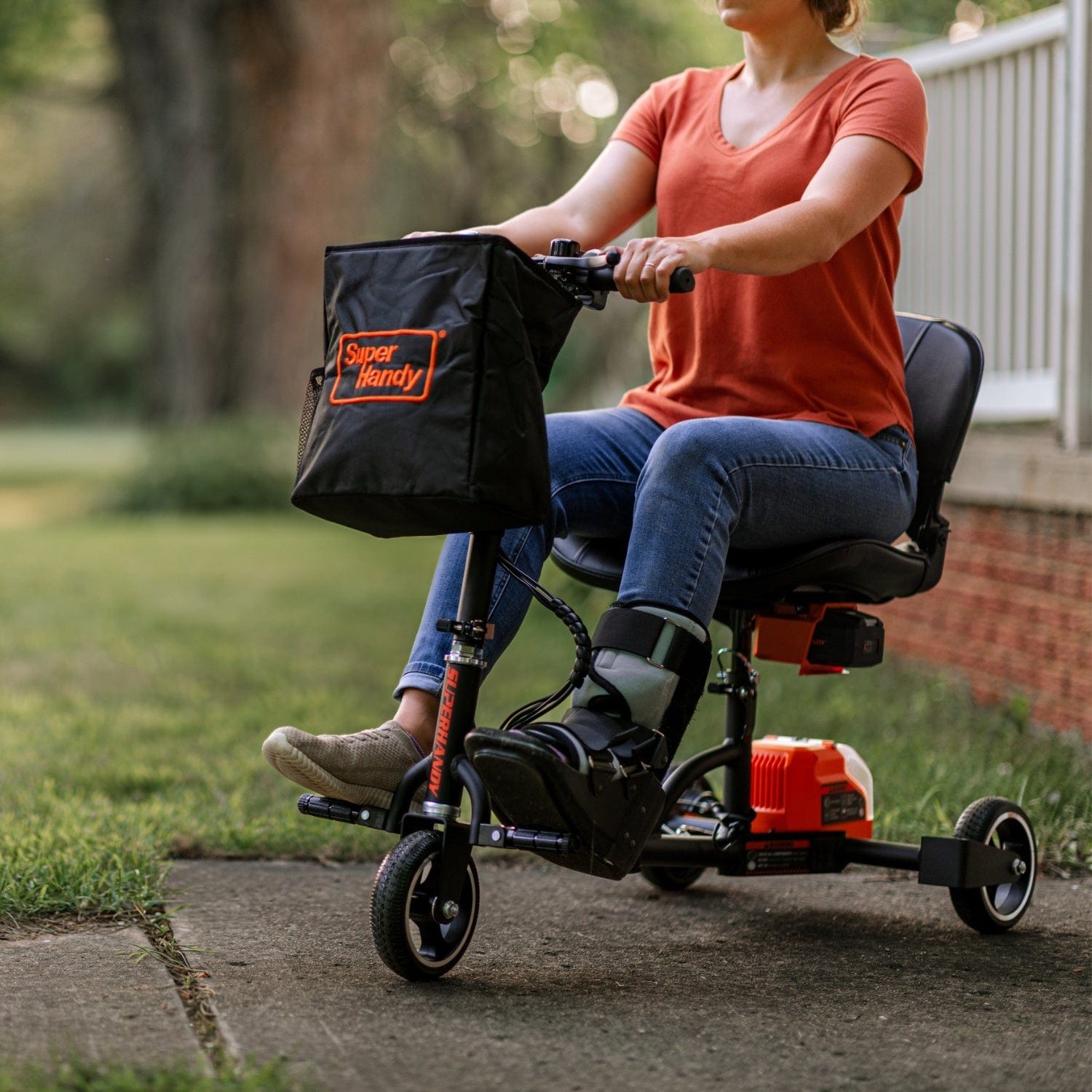
Leave a comment
All comments are moderated before being published.
This site is protected by hCaptcha and the hCaptcha Privacy Policy and Terms of Service apply.